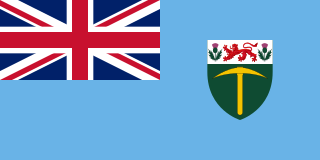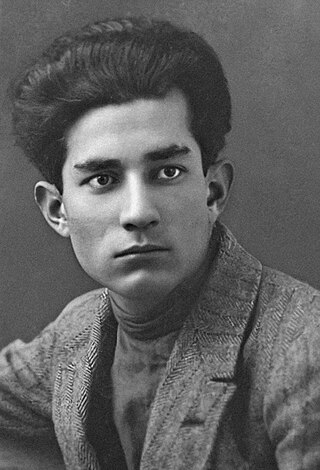Related Research Articles

The Zimbabwe Defence Forces (ZDF) are composed of the Zimbabwe National Army (ZNA) and the Air Force of Zimbabwe (AFZ). As a landlocked country, Zimbabwe has no navy. The most senior commander of the ZDF is General Philip Valerio Sibanda. At the time of independence after the Rhodesian Bush War, the then Prime Minister Robert Mugabe declared that integrating Zimbabwe's three armed forces would be one of Zimbabwe's top priorities. The existing Rhodesian Army was combined with the two guerrilla armies; the 20,000-strong Zimbabwe African National Liberation Army (ZANLA) forces of Zimbabwe African National Union-PF and the 15,000-strong Zimbabwe People's Revolutionary Army (ZIPRA) forces of PF-Zimbabwe African People's Union. The current manpower stands at an estimated strength of 29,000 in the Army, and an estimated 4,000 in the Air Force. Since the Rhodesian Bush War, the armed forces has been mostly involved with the suppression of non-state armed cells in a number of operations.

Socialist realism is a style of idealized realistic art that was developed in the Soviet Union and was the official style in that country between 1932 and 1988, as well as in other socialist countries after World War II. Socialist realism is characterized by the depiction of communist values, such as the emancipation of the proletariat. Despite its name, the figures in the style are very often highly idealized, especially in sculpture, where it often leans heavily on the conventions of classical sculpture. Although related, it should not be confused with social realism, a type of art that realistically depicts subjects of social concern, or other forms of "realism" in the visual arts. Socialist realism was made with an extremely literal and obvious meaning, usually showing an idealized USSR. Socialist realism was usually devoid of complex artistic meaning or interpretation.

Russian literature refers to the literature of Russia and its émigrés and to Russian-language literature. The roots of Russian literature can be traced to the Middle Ages, when epics and chronicles in Old East Slavic were composed. By the Age of Enlightenment, literature had grown in importance, and from the early 1830s, Russian literature underwent an astounding golden age in poetry, prose and drama. Romanticism permitted a flowering of poetic talent: Vasily Zhukovsky and later his protégé Alexander Pushkin came to the fore. Prose was flourishing as well. Mikhail Lermontov was one of the most important poets and novelists. The first great Russian novelist was Nikolai Gogol. Then came Ivan Turgenev, who mastered both short stories and novels. Fyodor Dostoevsky and Leo Tolstoy soon became internationally renowned. Other important figures of Russian realism were Ivan Goncharov, Mikhail Saltykov-Shchedrin and Nikolai Leskov. In the second half of the century Anton Chekhov excelled in short stories and became a leading dramatist. The beginning of the 20th century ranks as the Silver Age of Russian poetry. The poets most often associated with the "Silver Age" are Konstantin Balmont, Valery Bryusov, Alexander Blok, Anna Akhmatova, Nikolay Gumilyov, Sergei Yesenin, Vladimir Mayakovsky, and Marina Tsvetaeva. This era produced some first-rate novelists and short-story writers, such as Aleksandr Kuprin, Nobel Prize winner Ivan Bunin, Leonid Andreyev, Fyodor Sologub, Yevgeny Zamyatin, Alexander Belyaev, Andrei Bely and Maxim Gorky.
Herbert Wiltshire Pfumaindini Chitepo led the Zimbabwe African National Union (ZANU) until he was assassinated in March 1975. Although his murderer remains unidentified, the Rhodesian author Peter Stiff says that a former soldier of the British Special Air Service (SAS), Hugh Hind, was responsible.
Operation Dingo was a major raid conducted by the Rhodesian Security Forces against the Zimbabwe African National Liberation Army (ZANLA) headquarters at Chimoio and a smaller camp at Tembue in Mozambique from 23 to 25 November 1977.

The Rhodesian Bush War, also called the Second Chimurenga as well as the Zimbabwe War of Independence, was a civil conflict from July 1964 to December 1979 in the unrecognised country of Rhodesia.

Zimbabwe People's Revolutionary Army (ZIPRA) was the military wing of the Zimbabwe African People's Union (ZAPU), a Marxist–Leninist political party in Rhodesia. It participated in the Rhodesian Bush War against white minority rule of Rhodesia. ZIPRA was formed during the 1960s by the nationalist leader Jason Moyo, the deputy of Joshua Nkomo.

Zimbabwe African National Liberation Army (ZANLA) was the military wing of the Zimbabwe African National Union (ZANU), a militant African nationalist organisation that participated in the Rhodesian Bush War against white minority rule of Rhodesia.

The Mozambican Civil War was a civil war fought in Mozambique from 1977 to 1992. Like many regional African conflicts during the late twentieth century, the Mozambican Civil War possessed local dynamics but was also exacerbated greatly by the polarizing effects of Cold War politics. The war was fought between Mozambique's ruling Marxist Mozambique Liberation Front (FRELIMO), the anti-communist insurgent forces of the Mozambican National Resistance (RENAMO), and a number of smaller factions such as the PRM, UNAMO, COREMO, UNIPOMO, and FUMO.

Reading is a popular pastime in North Korea, where literacy and books enjoy a high cultural standing, elevated by the regime's efforts to disseminate propaganda as texts. Because of this, writers are held in high prestige.

The history of Rhodesia from 1965 to 1979 covers Rhodesia's time as a state unrecognised by the international community following the predominantly white minority government's Unilateral Declaration of Independence on 11 November 1965. Headed by Prime Minister Ian Smith, the Rhodesian Front remained in government until 1 June 1979, when the country was reconstituted as Zimbabwe Rhodesia.

Air Rhodesia Flight 825 was a scheduled passenger flight that was shot down by the Zimbabwe People's Revolutionary Army (ZIPRA) on 3 September 1978, during the Rhodesian Bush War. The aircraft involved, a Vickers Viscount named the Hunyani, was flying the last leg of Air Rhodesia's regular scheduled service from Victoria Falls to the capital Salisbury, via the resort town of Kariba.

Petras Cvirka was a Lithuanian writer of several novels, children's books, and short story collections. He wrote under a variety of pen names: A. Cvingelis, Cezaris Petrėnas, J. K. Pavilionis, K. Cvirka, Kanapeikus, Kazys Gerutis, Klangis, Klangis Petras, Klangių Petras, L. P. Cvirka, Laumakys, P. Cvinglis, P. Cvirka-Rymantas, P. Gelmė, P. Veliuoniškis, Petras Serapinas, and S. Laumakys. His works have been translated into Belarusian, Bulgarian, Chinese, Czech, English, Estonian, Hungarian, Latvian, Polish, Romanian, and Uzbek.

The 1st Battalion, The Rhodesian Light Infantry, commonly the Rhodesian Light Infantry, served in the Rhodesian Bush War as part of the Rhodesian Security Forces between 1964 and 1979, under the unrecognised government of Rhodesia following its 1965 Unilateral Declaration of Independence from Britain. During the second half of 1979 it fought for Zimbabwe Rhodesia, a black majority-ruled version of the same state which also failed to win international recognition. After an interim period under British control from December 1979 to April 1980, the RLI briefly remained active within the armed forces of Zimbabwe, but did not see action under this government. It disbanded on 31 October 1980.
The 1st Battalion, The Rhodesian Light Infantry, commonly the Rhodesian Light Infantry, served in the Rhodesian Bush War as part of the Rhodesian Security Forces between 1964 and 1979, under the unrecognised government of Rhodesia after its Unilateral Declaration of Independence from Britain on 11 November 1965. Latterly, during the second half of 1979, it fought for Zimbabwe Rhodesia, a reorganised version of Rhodesia under a black majority government which still went unrecognised. After an interim period under British control from December 1979 to April 1980, the RLI briefly remained active within the armed forces of the internationally recognised Republic of Zimbabwe, but did not see action under this government. It laid up its colours on 17 October 1980 and disbanded two weeks later.

Mehdi Ali oglu Huseynov – famed under the pseudonym Mehdi Huseyn was an Azerbaijani and Soviet writer and critic, laureate of the State Stalin Prize of the third degree (1950) and member of the All-Union Communist Party since 1941.
Operation Eland, also known as the Nyadzonya Raid, was a military operation carried out by operatives of the Rhodesian Selous Scouts at Nyadzonya in Mozambique on 9 August 1976. The Rhodesians initially claimed 300 ZANLA and 30 FAM soldiers were killed and claimed documentation captured after the event suggested that more than 1,028 were killed, while ZANLA and Amnesty International claimed the people killed were unarmed refugees.
The 1981 Entumbane uprising, also known as the Battle of Bulawayo or Entumbane II, occurred between 8 and 12 February 1981 in and around Bulawayo, Zimbabwe amid political tensions in the newly independent state. Zimbabwe People's Revolutionary Army (ZIPRA) guerrillas, mainly in the city's western suburb of Entumbane, rebelled, creating a situation that threatened to develop into a fresh civil war, barely a year after the end of the Bush War. The Rhodesian African Rifles (RAR) and other white-commanded elements of the former Rhodesian Security Forces, fighting for the Zimbabwean government as part of the new Zimbabwe National Army, put down the uprising. Groups of Zimbabwe African National Liberation Army (ZANLA) fighters attacked both ZIPRA and the government forces during the revolt, which followed a smaller outbreak of fighting between guerrillas in November 1980.
The Battle of Chnihoyi, also known as the Battle of Sinoia was a small military engagement fought near Sinoia between a small unit of Zimbabwe African National Liberation Army (ZANLA) guerrillas and the Rhodesian police force on 28 April 1966. The skirmish is generally considered the opening engagement of the Second Chimurenga. A team of seven ZANLA cadres engaged with British South Africa Police forces near the northern town of Sinoia. The seven guerrillas all eventually died in the battle, the police killing all seven.
Late on 22 December 1972, a troop from the Rhodesian Special Air Service, followed shortly by the Rhodesian Light Infantry, reported to the police station in Centenary. The land mine in Altena's driveway was discovered, disarmed and removed. For their own safety, Marc de Borchgrave and his family were sent to Whistlefield Farm, which was owned by Archie Dalgluish and his family, while their family home was being repaired.
References
- ↑ Adrian A. Roscoe, "Garikai N. Mutasa", The Columbia Guide to Central African Literature in English Since 1945.
- ↑ Peter O. Stummer, Christopher Balme, Fusion of Cultures? 1996, p. 166, "Nationalist histomythographies were written. One of the victory novels is Garikai Mutasa's The Contact. Its outlook of friends versus enemies is binary and oppositional, but not along lines of race — as in the fictional white fascist accounts of the "Old North/West" - rather, along lines prefabricated by the Soviet school of socialist realism."
- ↑ Ernest Emenyo̲nu, War in African Literature Today: A Review, 2008 (0852555717), p. 89: "The story of the war is narrated from the third person singular, a perspective that allows the omniscient narrator to supply the reader with detailed information about the potentially conflicting war narratives in the novel. The Contact highlights the physical and military prowess of the Zanla guerrillas and the author, Garikai Mutasa does not hesitate to award all the major military victories to the armed guerrillas."
- ↑ "The Contact". readingzimbabwe.com. Retrieved 4 May 2020.